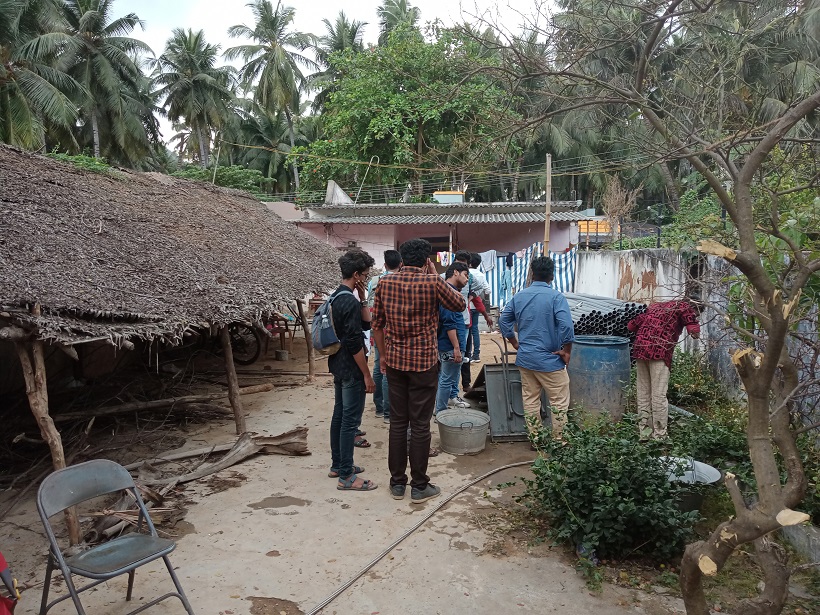The proceedings of the National seminar Buddhism and Sectarian Religious faith in India or Buddha and Anti-caste Bhakti Saints held at Acharya Nagarjuna University on March 1st and 2nd 2023 (2)
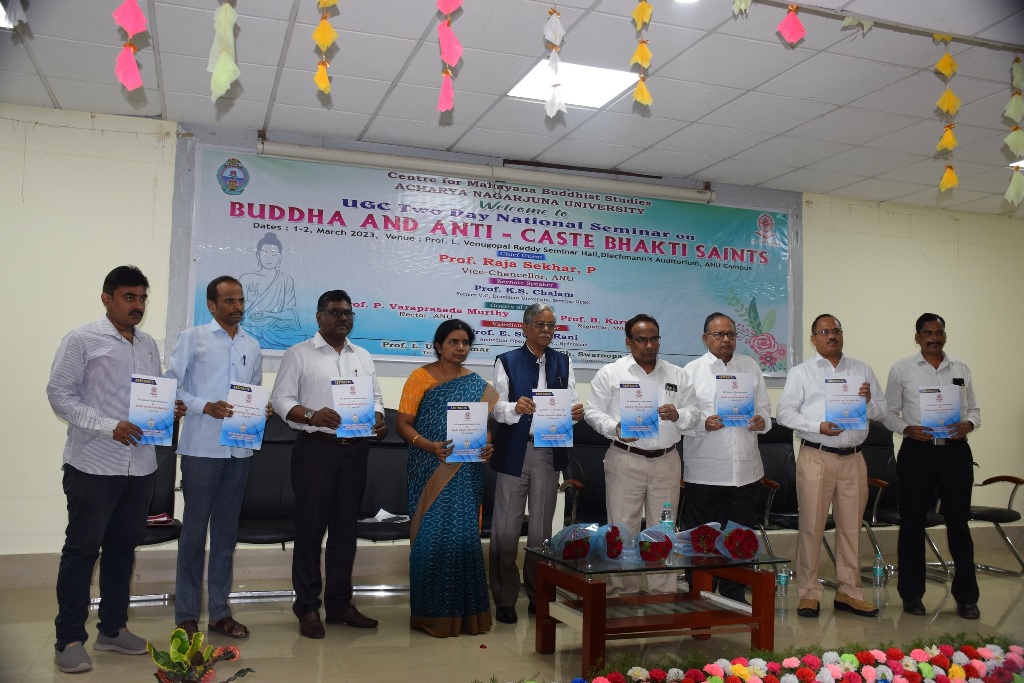
Objectives of the Seminar: There are serious studies available purely either on Buddhism or Bhakti movement and anti-caste traditions. But, it is noticed that deliberations on continuity of non- Vedic and anti-caste intellectual tradition, initiated by Buddha in another forms and their variations are absent. In view of absence of comparative studies on Buddha and other anti-caste philosophers during lhe subsequent period, present seminar is proposed. Present Two Day National Seminar is aimed at serious deliberations on the impact Buddhist egalitarianism on other sectarian religious faiths after the defeat of Buddhism in India. And it is also intended to identify the basic differences and resemblances of all anti-caste sectarian religious movements.
Sub- themes: The subthemes and others are also listed out for illustrative purpose:
1. Buddhism — Buddhist anti- caste Philosophy
2. Vajrayana/ Siddha cults in South India
3. Sectarianism — Medieval Bhakti movements and anti-casse philosophy
4. Virasaivism- Basaveswara, Akkamahadevi, Panditaradhya
5. Vaishnavism —Ramanuja, Brahmanaidu
6. Pothuluri Virabrahmam- Vemana
7. Nasarayya- Dunna Iddasu- Yadla Ramadasu
8. Sufi saints
9. Tukaram- Sant Ravidas- Chokkamela
10. Meerabai- Kabir- Bhima Boi
11. Any other relevant theme Submission of Papers

01-03-2023 (Wednesday): The seminar was inaugurated with a prayer to Buddha sung by the Buddhist students followed by the prayer song of the University invoking Acharya Nagarjuna. The seminar convener Ch. Swaroopa Rani invited the dignitaries, the guests and delegates, introducing the Mahayana Buddhist centre and explaining the theme of the seminar. Prof Rajasekar, VC, talked about the theme with examples. Then, P. D. Satya Paul delved upon the communal Hinduism criticizing P.V. Kane who carried on the Maxmueller’s project, Dr S. Radhakrishan for his opinion about Buddha (Buddha’s movement was a protestant type of reformative Hinduism) and Swami Vivekananda for perpetuating caste. He was suggesting about a “proto-sramanic” tradition before IVC, based on which, the Buddhism could have been evolved. Dr Ramabhadra Kumar pointed out delving upon some books that caste problem has been spread to all other countries, now working in 33 major countries. He emphasized the consolidation of caste, annihilation of caste and dissolution of caste. K. S. Chalam, the key-note speaker spoke about many issues and they have been printed in the “abstract” booklet. K. S. Chalam was sarcastically talking about “Brahminical virus” / brahmin diaspora virus spreading in the “Diaspora” countries throughout the world, it is more dangerous than Carona virus and so on.
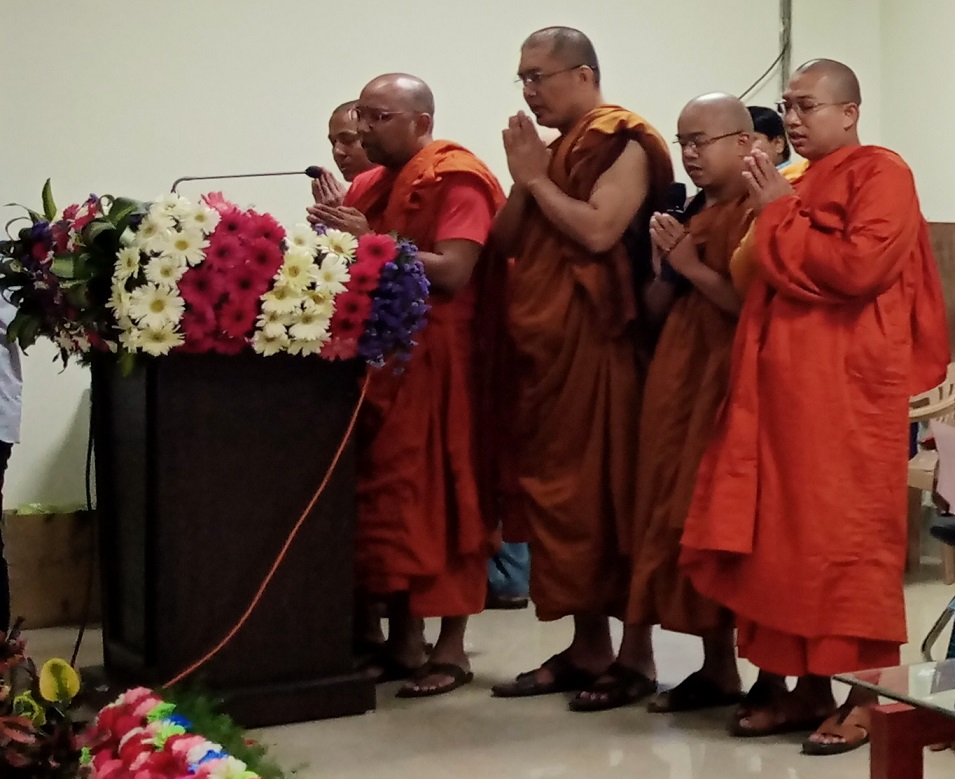
Brahmin diaspora virus – S.K. Chalam: First, Ramabadhrakumar was telling that caste has been there in 33 countries of the world and then, S. K. Chalam mentioned about “Brahmin diaspora virus,” affecting and it is more dangerous than Carona virus. Incidentally, such idea has been floated by the left-oriented media in the internet[1]. The Wire came out with a story[2] that “Communal Virus Injected into Diaspora, and the Culture is Growing” and claimed that it was published originally somewhere[3], giving a link. That link contains another story[4], “Supreme Court Pulls Up Union Govt & TV For Allowing Hate Speech; Communal Virus Injected Into Diaspora And The Culture Is Growing.” So they could find virus suddenly comparing it with caste. S. K. Chalam directly christened it as “Brahmin diaspora virus”! As usual, it is not known, why “Khastriya diaspora virus,” “Vaisyha diaspora virus,” and “Sudra diaspora virus,” are not found or located in their narratives and discourses. Talking about “hate speech,” they are producing more “hate speech” and it is not known as to whether they understand or not.

“Abstracts” of papers: The “Abstracts” contain 35 papers and full papers of key-note and valedictory addresses.
| Speaker / paper presenter | Title of the paper | Page no. |
| K. S. Chalam, Key-note address | Impact of Buddhism on Anti-caste Egalitarian movements in India[5] (Key note address) | 1-19 |
| M. Koteswara Rao | Buddhism: a philosophy of social transformation. | 25 |
| Pannasami | Caste system in Theravada Buddhist perspective. | 26 |
| M.M. Vinodini | Akkammadevi’s literature that called for women’s emancipation | |
| P. D. Satya Paul | Title – not known, not listed / included in the “Abstracts” He spoke twice for nearly two hours…. | |
| K. V. Ramakrishna Rao | The Sectarian encounters between the Buddhist and Jain faiths during the Medieval period for commercialization and communalization | 34-35 |
| Yadhava Raghu | Dasa movement and its impact on Telugu villages bordering Karnataka: a case of Pyalakurthy village, Kurnool district[6]. | 37-38 46 |
| John Weasley | Siddha cults in South India. | 57 |
| Sugandha | The Buddhist perspective of social sratification | 5 8 |
| N. Kanakaratnam | Caste frevenge on adigas and Malas. | 60 |
| Eluri Harshavardhan | Egalitarian ideals of Buddhism: A repository of counter discourse in Andhradesa | |
| E. Sudha Rani, Valedictory address | Women Bhakti saints’ voices: the radical anti-caste movements in medieval India. | 20-24 |

Afternoon first session, the following papers were presented:
| Speaker / paper presenter | Title of the paper | Page no. |
| K. S. Chalam[7], Key-note address | Impact of Buddhism on Anti-caste Egalitarian movements in India[8] (Key note address) | 1-19 |
| M. Koteswara Rao[9] | Buddhism: a philosophy of social transformation. | 25 |
| Pannasami[10] | Caste system in Theravada Buddhist perspective. | 26 |
| M.M. Vinodini[11] | Akkammadevi’s literature that called for women’s emancipation |
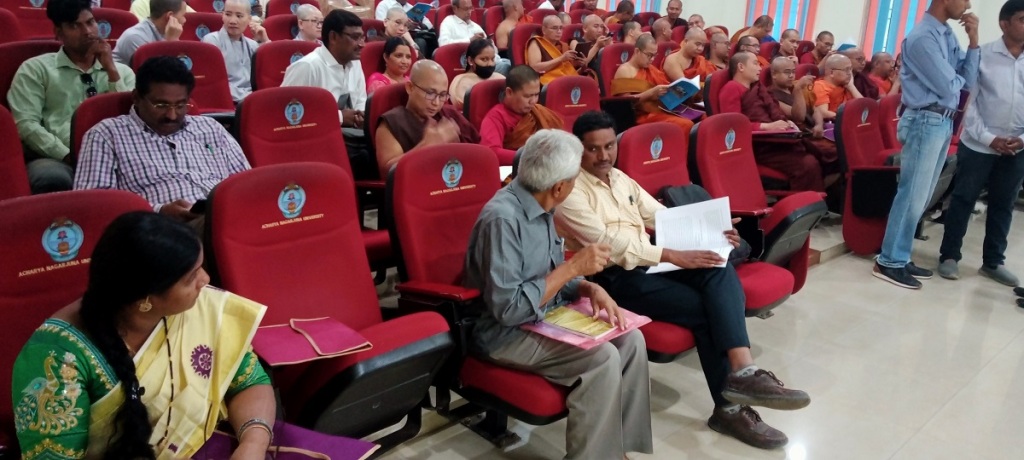
M. Koteswara Rao was talking about caste, case system, Ambedkar etc., in a general manner and explaining the contemporary conditions. He was stressing that the process of thesis, anti-thesis and synthesis should take place.
Pannasami’s paper perplexed some audience because, he was explaining about, “Caste system in Theravada Buddhist perspective,” while the seminar was about how Buddhism could pave way for anti-caste movement. That is Buddhism could not have any type of social discrimination, when it was against caste system.
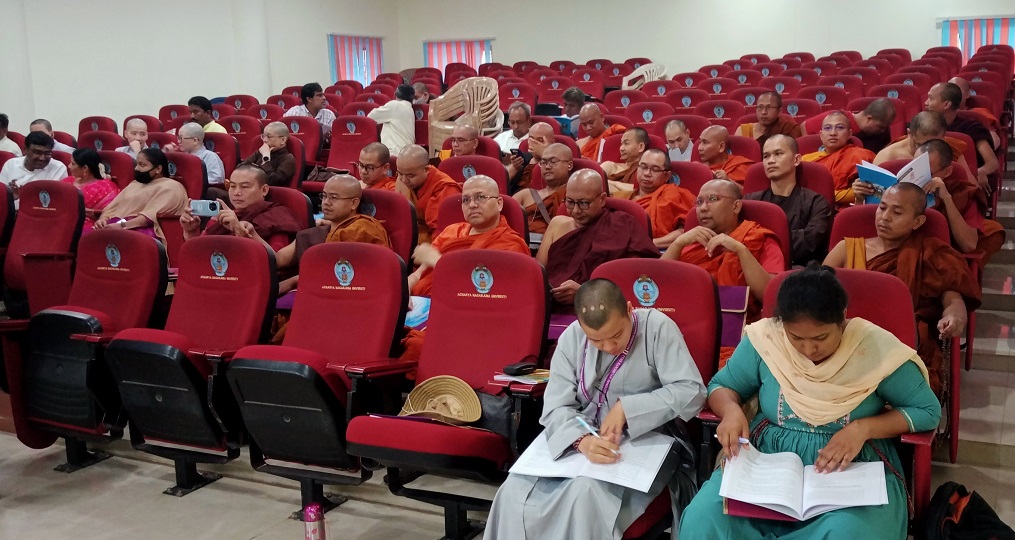
The last paper presenter was virtually speaking as if she was giving a literary discourse (like pattimanram in the Tamil context) and spoke for one hour explaining the poetic nuances in Telugu, repeating points again and again. Though, he was narrating other stories, she did not mention that according to legends, she was a beautiful woman with long tresses and Kaushika, the Jain ruler of the region, fell in love with her. However, some accounts suggest that despite Kaushika’s proposal to marry Akka, the latter not only refused, but when forced, renounced her family, discarded her clothes and left the village covered only in her long tresses. Thus, here also, the Jaina-Saiva conflict is known. In other versions, it is claimed that the wedding did actually take place but on the conditions that the king would neither touch Akka without her permission nor hinder her worship. However, when Kaushika failed to honour the agreement, Akka left his palace leaving behind all his presents, including her clothes and acknowledged Lord Chennamallikarjuna as her sole husband.
© K. V. Ramakrishna Rao
05-03-2023

[1] The Wire, Communal Virus Injected into Diaspora, and the Culture is Growing, Sidharth Bhatia, 23-09-2022.
[2] https://thewire.in/communalism/communal-virus-leicester
[3] Pratik Kanjilal, Supreme Court Pulls Up Union Govt & TV For Allowing Hate Speech; Communal Virus Injected Into Diaspora And The Culture Is Growing, September 22, 2022
[4] https://www.theindiacable.com/p/supreme-court-pulls-up-union-govt?utm_source=email
[5] Though his paper has been printed in about 20 pagers, it is not complete and of course, he accepted that it was only “abstract,” and he would send his full paper.
[6] His paper has been printed twice as shown – this shows the mechanical way of preparation of “Abstracts” without going into the details.
[7] Prof. Chalam held the position of –
- Vice- Chancellor, Dravidian University, Kuppam (AP) (2005);
- Member, Planning Board, Govt. of M.P., (2002-04);
- Founder Director, UGC Academic Staff College, Andhra University, Visakhapatnam (1987-2005);
- Director, Swamy Ramananda Tirtha Rural Institute, Pochampally, Hyderabad (1997-98);
- Professor of Economics, Andhra University (1990-2005).
- He is on several Committees as Hon’ble Chairman, Member such as UGC, NCRI, A.U etc.
- He was Search Committee Member for selection of Vice- Chancellor for Telugu and Telangana Universities in Andhra Pradesh.
[8] Though his paper has been printed in about 20 pagers, it is not complete and of course, he accepted that it was only “abstract,” and he would send his full paper.
[9] Associate Professor, Department of English – Krishna University, Andhra Pradesh.
[10] Research scholar, Centre for Mahayana Buddhist Studies, ANU, AP.
[11] Associate Professor, Department of Telugu, Yogi Vemana University, Kadapa-516005., Andhra Pradesh
Filed under: Brahma, brahman, brahmin, Buddhist, buddhist claim, Buddhist relic, buddhist site, budhikanama, caste, civilization, colony, colour, columnist, common era, Communist Historian, compassion, dalit, dalit buddhhist, dalit Buddhist, dalit christian, dalit hindu, dalit Jain, dalit literature, Dramila, Dravida, Dravidam, dravidar, ethnicity, ethnology, female, female-worker, feminist, gandhi, gay, gender, ghost, God, godavari, goddess, Harappa, health, Heaven, heritage, Hindu, Hindu religion, hindu ritual, historian, historical politician, historicity, historiography, historiosophy, history, history useful, history useless, marxism, Marxist historian, Marxist-Leninist, Nagarjuna, nagarjuna sagar, Nagarjuna University, nation, nirvana, non-academic, non-brahmin, non-Veddc, non-Vedic, non-vegetarian, non-violence, not Hindu, patriarchal, political correctness’, political historian, race, racialism, racism, reform, reformation, regionalism, relic, research, research paper, researcher, sectarian, sectarian faith, sectarianism, sex, social justice, social reform, Social Reform Movement, spirit, spiritual, spirituality, tamil, tamil chauvinism, Tamil manuscript, Tamil manuscripts, tamil sectarianism, tamil separatism, tamil siddha, Tamil siddha manuscript, Tamil siddhar, Tantra, telangana, telugu, temple, third gender, tribal, tribe, Vedic, wahabi, Wahabi conspiracy, wahabi movement, wheel, woman, women, xenophobia, Yantra, Yogic, Yogini, youth | Tagged: acharya nagarjuna, Acharya Nagarjuna University, arya, aryan, aryan invasion, aryan race, atheist, bakti, bhakti, bhakti movement, buddha, buddhism, Buddhist, buddhist claim, buddhist site, caste, caste politics, dalit Buddhist, date of Buddha, dharmachakra, Dramila, dravid, Dravida, Dravidam, Dravidar, Dravidi, Dravidian, dravidian model, dravidian race, dravidian stock, drawing, jain, jainism, muslim, Nagarjuna, nirvana, praccana buddha, saint, suicide | Leave a comment »











